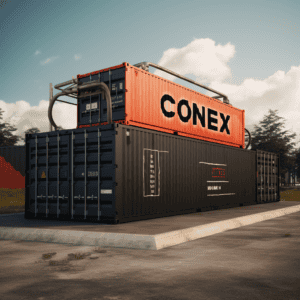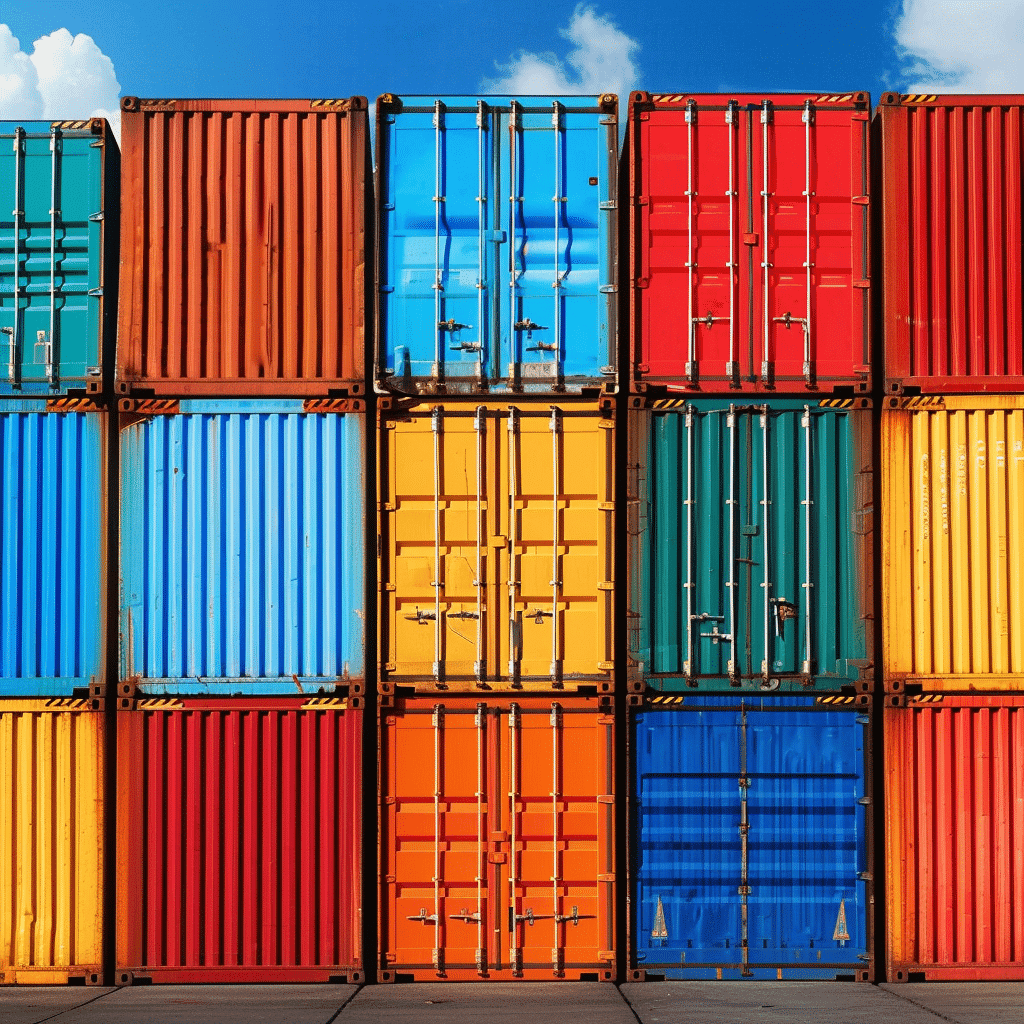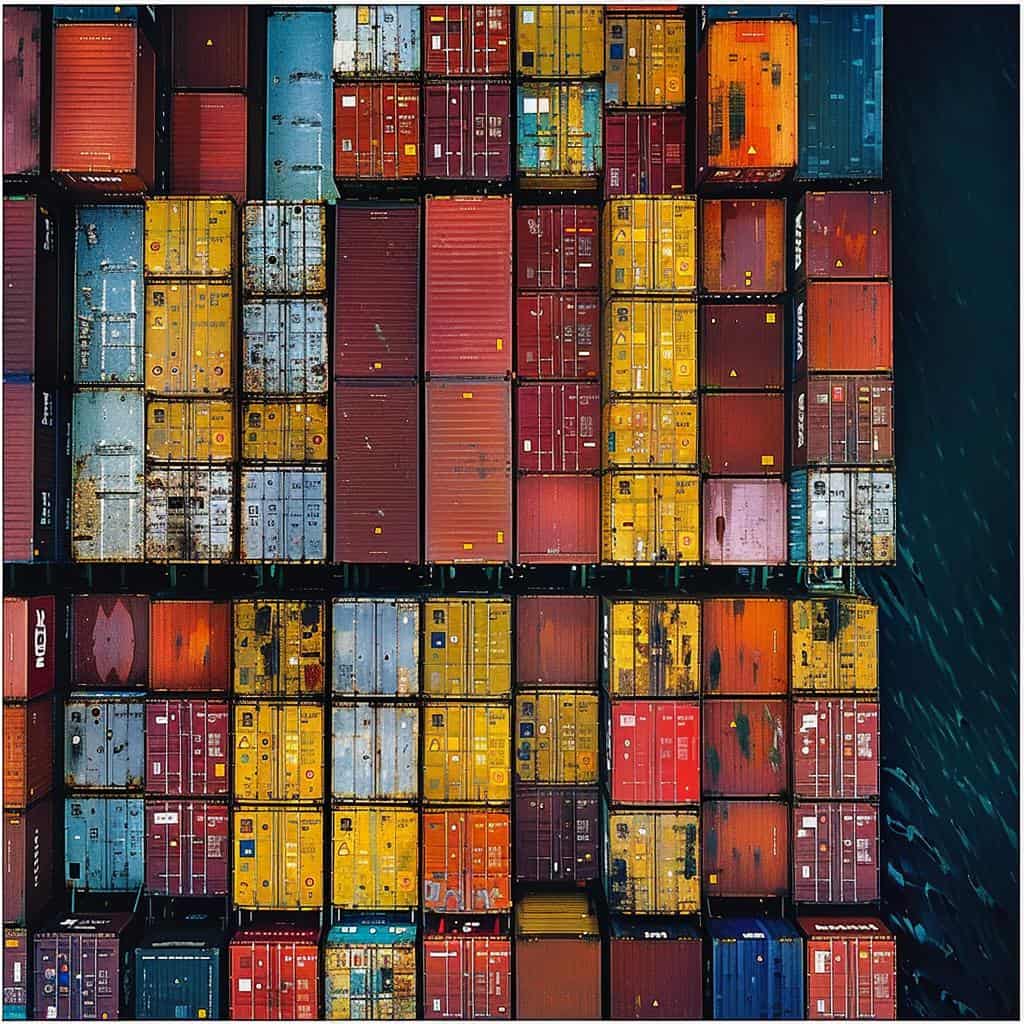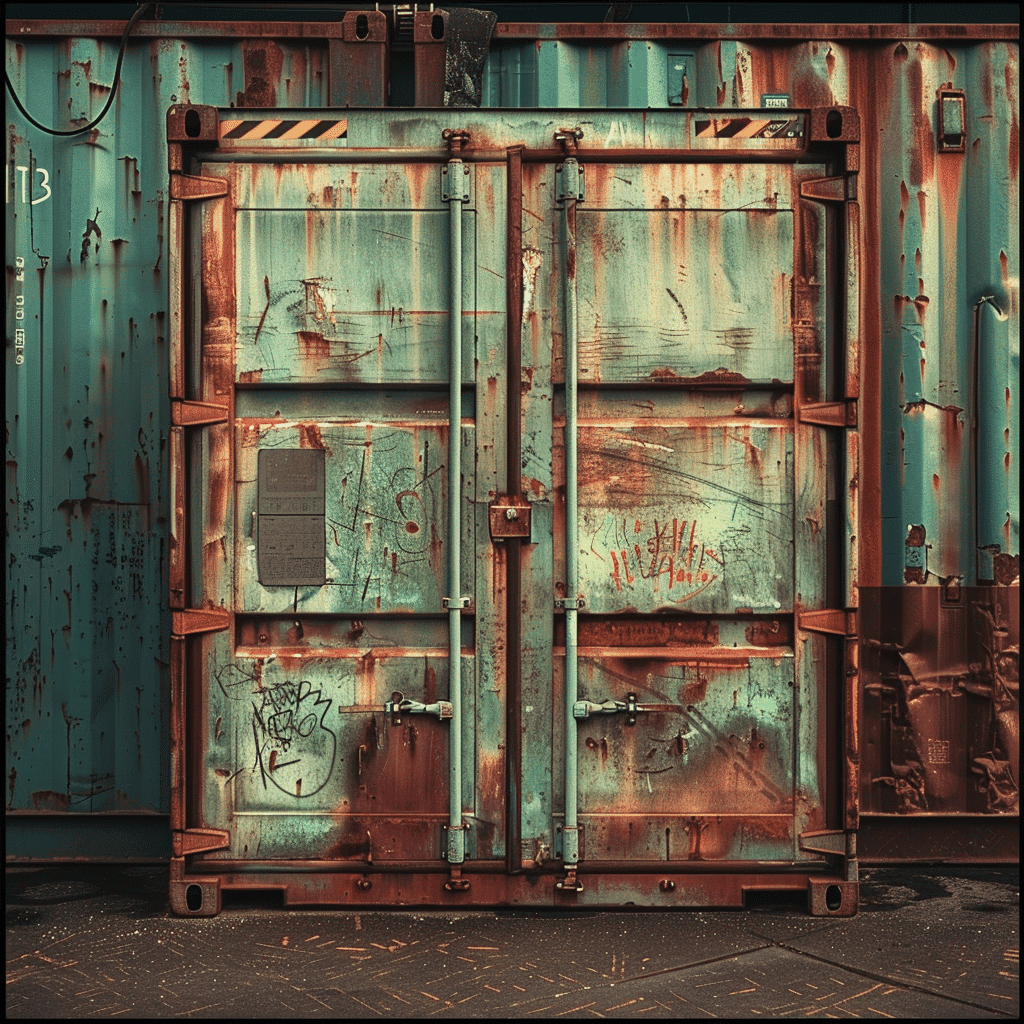Are you struggling to decide between a conex box and a shipping container? Don’t worry, we’ve got you covered.
In this article, we will explore the advantages and differences of both options, helping you make an informed choice. Whether you are looking for storage solutions or planning to ship goods, understanding the benefits of each will ensure you choose the right one for your needs.
So let’s dive in and find out which option suits you best!
What Do You Call Them
When deciding between a conex box and a shipping container, you may be wondering: What’re they actually called? Well, both terms are commonly used to refer to the same thing: a storage container for shipping and transportation purposes.
The term ‘shipping container’ is more widely recognized and used in the shipping industry itself, while ‘conex box’ is a colloquial term that originates from ‘container express.’
These containers are typically made of steel and come in various sizes, such as 20 feet, 40 feet, and even larger. They’re designed to withstand harsh weather conditions and protect the cargo stored inside.
Shipping Containers
To compare the terms conex box and shipping container, it’s important to understand the features and uses of a conex box vs shipping container.
Shipping containers are weather resistant steel boxes that are primarily used in the ship cargo and container storage industry. These intermodal containers are designed to withstand the harsh conditions of sea transport, making them extremely durable and reliable.
They say shipping containers come in various sizes, typically ranging from 10 to 40 feet in length, and can be easily transported using trucks, trains, or ships. Shipping containers provide secure and convenient storage solutions for a wide range of applications, including commercial and personal goods storage, residential moving, and even temporary housing.
With their versatility and strength, shipping containers have become a popular choice for many industries seeking cost-effective and efficient storage solutions.
Materials
Corten steel is the primary material used in the construction of shipping and cargo containers now, providing numerous benefits for their durability and longevity.
This high-strength steel alloy is specifically designed to withstand harsh weather conditions and resist corrosion, making it an ideal material for shipping container construction.
The use of high quality Corten steel also ensures that shipping containers can withstand the rigors of transportation, including being stacked on top of each other, exposed to extreme temperatures, and subjected to rough handling.
Additionally, Corten steel requires minimal maintenance, reducing the need for costly repairs and increasing the lifespan of the containers.
Common Sizes and the Significance of Their Corrugated Structure
When choosing between a conex box and a shipping container, you might wonder about the common sizes and why their corrugated structure is significant.
Both shipping containers and conex containers are available in standard sizes, such as 20 feet and 40 feet. These sizes are widely used in the industry, making it easier to transport the cargo containers and stack them.
The corrugated structure of these containers provides strength and durability. The corrugations, which are the ridges and grooves on the walls, help distribute weight evenly and increase the container’s resistance to external forces. This makes them ideal for withstanding harsh weather conditions and protecting the contents inside.
Additionally, the same corrugated steel container structure allows for easy modification and customization of the containers, making them versatile for various purposes.
Available Accessories for Customization and Security
To further customize storage and enhance the security of your chosen container, various accessories are available for you to choose from.
Whether you opt for dry storage in a conex container or a shipping container, these accessories can help you maximize your storage space and protect your belongings.
One popular accessory is the shelving system, which allows you to customize the storage layout inside the container. This is especially useful if you have specific items that require special handling or organization.
Additionally, you can choose to install lockboxes for added security, ensuring that your container is protected from unauthorized access.
Other available accessories include lighting fixtures, ventilation systems, and insulation materials, all of which can be tailored to your specific needs.
Conex Box
When considering the choice between a conex box and a shipping container, durability is a key factor to consider. A conex box, also known as a conex container, is specifically designed for rugged use in military and commercial applications. These containers are made from corten steel, which is known for its strength and resistance to corrosion. This makes them highly durable and able to withstand harsh weather conditions.
Additionally, conex storage containers come in various dimensions, allowing you to choose the size that best suits your storage needs. Whether you need a small storage container just for personal use or a larger one for commercial purposes, conex boxes offer flexibility in meeting your requirements.
Origin and Historical Context, Especially in the US Military
The origin and historical context of conex boxes, especially in the US military, can be traced back to their use in military and commercial applications.
The conex box, also commonly known as a shipping container, has a rich history deeply intertwined with the military. Initially designed to transport military cargo, these sturdy and versatile containers quickly gained popularity in the commercial sector as well.
The military recognized the value of using conex boxes due to their durability, ease of transportation, and ability to protect goods from harsh environments. As a result, the use of conex boxes became widespread in military operations, providing a secure and efficient method for transporting supplies, heavy equipment,, and even personnel.
Today, the military surplus of conex boxes has led to their availability as used shipping containers for various civilian applications, further contributing to their historical context and widespread use.
Introduction During the Korean War and Subsequent Use in the Vietnam War
During the Korean War and Vietnam War, utilizing conex boxes proved essential for efficient transportation and storage of military equipment and supplies.
The introduction of these containers during the Korean War marked a significant shift in logistics, as they provided a more secure and convenient way to transport goods. Originally, steel and boxes used to store them on cargo ships were repurposed to meet the military’s needs. However, as the demand for improved storage containers increased, conex containers evolved.
These containers were constructed using standardized dimensions, eventually leading to the creation of the ISO container. The conex boxes’ versatility and durability made them ideal for military operations in both the Korean and Vietnam Wars, enabling the efficient movement and storage of vital resources amidst challenging environments.
Dimensions of The original Conex Box
To understand the dimensions of the original Conex Box, imagine yourself handling this versatile cargo container during the Korean and Vietnam Wars. These shipping containers, also known as conex boxes, revolutionized cargo transportation with their robust construction and standardized dimensions.
Made of corrugated steel, they were designed to withstand harsh weather conditions and rough handling. The dimensions of the original Conex Box were standardized to ensure compatibility and ease of stacking. They typically measured 8 feet in width, 8 feet in height, and either 10, 20, or 40 feet in length.
These standard sized boxes made it easier for military personnel to transport and store supplies efficiently. The compact size and durability of the conex box made it an ideal choice for military operations in challenging environments.
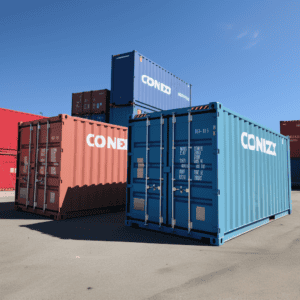
Evolution Into Modular Units for Efficient Storage
When considering the choice between a Conex Box and a shipping container, you may be interested in the evolution of the Conex Box into modular units for efficient storage. These modular units have been designed to maximize storage space and provide a more organized solution for various needs.
Unlike traditional shipping containers, which are typically one large enclosed space, Conex containers can be divided into smaller sections, creating separate storage compartments within a single unit. This allows for better organization and easy access to specific items without having to search through a large container.
Additionally, the modular design of Conex boxes enables them to be stacked and connected together, creating a flexible storage system that can be expanded or reconfigured as needed.
This modular approach to storage provides an efficient and adaptable solution for a variety of applications.
Scenarios
For different usage scenarios, each type of container serves a unique purpose.
Conex boxes are often used to store and provide storage space for various items. They’re commonly used by individuals or businesses who need a secure and portable storage solution.
On the other hand, most shipping containers themselves are designed specifically for transporting goods across long distances. They’re commonly used by commercial shipping operators to transport goods by sea, rail, or truck. The sturdy construction of shipping containers makes them ideal for transporting cargo and withstanding the rigors of international shipping. Additionally, their security features make them suitable for storing valuable goods during transit.
Whether you need a container for storage purposes or for transporting goods, it’s essential to consider the specific requirements of your usage scenario before making a decision.
Regional Preferences and Terminologies
When choosing between a conex box and a shipping container, it’s important to consider regional preferences and terminologies. While both terms are often used interchangeably, there are some key differences that vary depending on the region.
In the United States, the term ‘conex box’ is commonly used to refer to a shipping container made of corten steel. On the other hand, in other parts of the world, the term ‘shipping container’ is more commonly used to describe these durable metal structures.
Understanding these regional preferences and terminologies is crucial when discussing or purchasing these containers. Whether you refer to it as a conex box or a shipping container, the important thing is to ensure that it meets your specific needs and requirements.
Frequently Asked Questions
What is the difference between a shipping container and a Conex box?
The difference between a shipping container and a Conex box primarily lies in their origin and terminology. Shipping containers are large steel boxes used universally for storing and transporting cargo across the seas, and they come in various standard sizes. On the other hand, the term “Conex box” originated from the U.S. military during the Korean War, derived from “Container Express.” While Conex boxes are essentially shipping containers, they were specifically developed for sending military cargo to the front lines.
Conclusion
To make an informed decision between a conex box and a shipping container, consider your specific needs and requirements, ensuring that the chosen option aligns with regional preferences and terminologies.
When it comes to shipping containers, both conex boxes and traditional shipping containers are made of high-quality corrugated steel, designed to withstand the rigors of transportation and maintain structural integrity. However, the key difference lies in the logistics method they’re commonly associated with.
Conex boxes are often used for military deployments and as portable storage units, while shipping containers are the standard choice for international shipping and intermodal transportation.
If you need to carry cargo across different modes of transport, a shipping container would be the suitable option. On the other hand, if you require a portable storage solution or are a cargo ship involved in military operations, a conex box would be more appropriate.
Consider your specific needs and requirements, and choose the option that best meets them.
